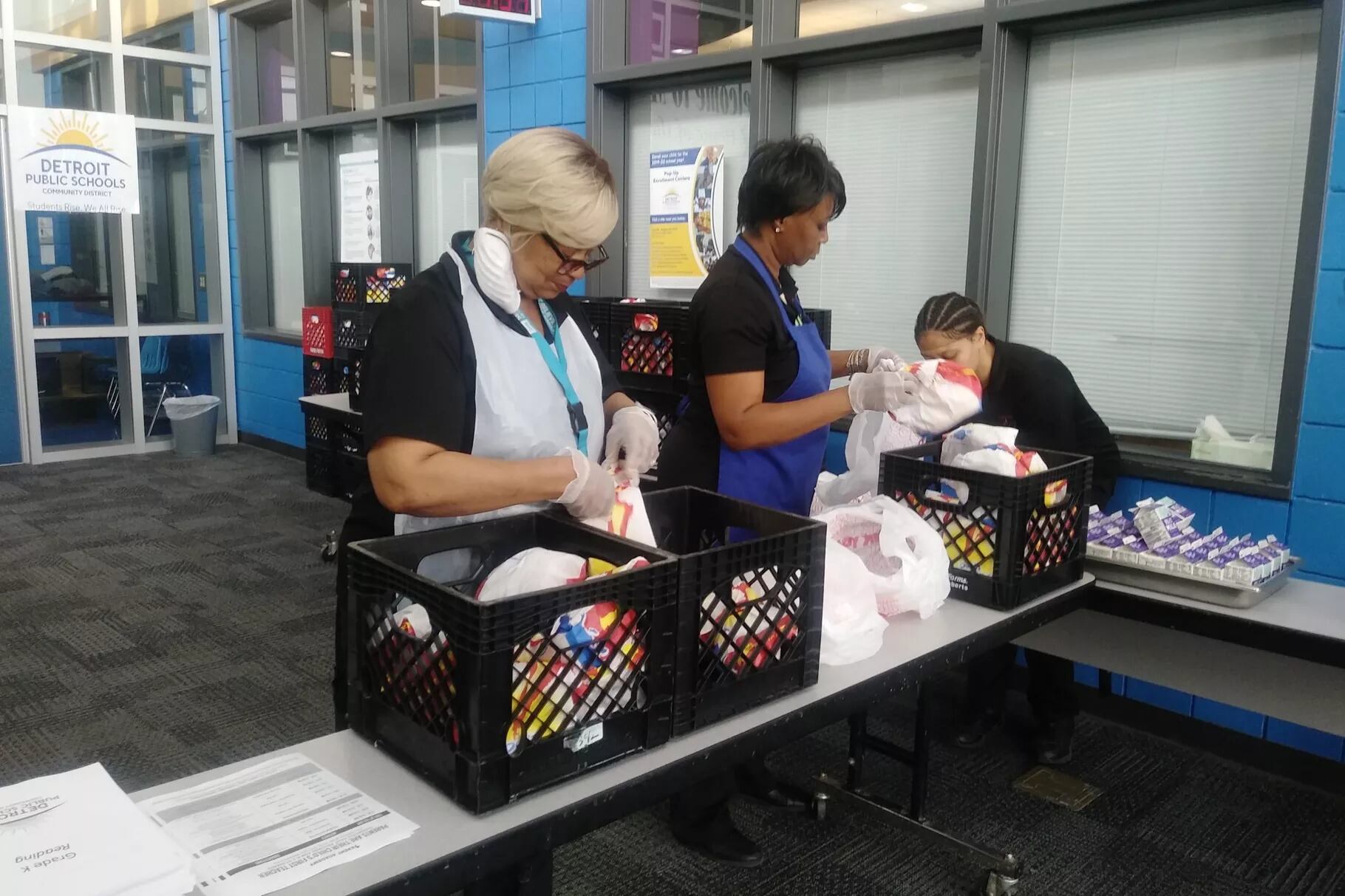The number of students eating meals in the Detroit school district is way down this year, a pandemic-related problem that has officials wondering whether children who need meals aren’t getting them, or if their parents have found other sources of food.
In a typical school year, the district distributes 69,500 meals a day. With three quarters of the district’s students learning online since the beginning of the school year, that number has been reduced to about 16,000 meals a day since September, despite the district’s efforts to provide meals that can be picked up by students learning online.
Now that face-to-face instruction has been suspended until January, and all students will be learning online, the daily count is expected to drop to 4,000, Superintendent Nikolai Vitti said during a finance committee meeting Friday morning.
Here’s where Detroit online learners can get meals during the fall
The declines raise concerns about the well-being of children, especially if their parents are not finding meals elsewhere. Nearly 90% of the students in the Detroit district are eligible for free or reduced-price meals, and many have relied on school to receive meals. Research shows that students who receive subsidized meals from school are less likely to struggle with hunger issues, obesity, and poor health.
It’s an issue being felt across the state and nation, particularly in districts with large numbers of students learning online, said Diane Golzynski, director of the office of health and nutrition services at the Michigan Department of Education.
The state education department has a comprehensive interactive map that helps connect parents to school locations where they can pick up meals, she said.
“But it appears that there are still struggles with getting the food. I don’t have hard data on why but my best guess is transportation, timing, and communication are the largest challenges,” Golzynski said.
Vitti, during Friday’s committee meeting, said he believes the numbers are down largely because parents have found other sources of food.
“My sense is that families will continue to rely on other sources,” Vitti said. That may change, though, as COVID-19 cases rise and if the state moves toward a lockdown, he said.
The decline in meals served has community agencies like the United Way of Southeastern Michigan (a Chalkbeat funder) seeking ways to understand the challenges facing families and to get a handle on where families are getting food.
The agency is “engaging both funders and research institutions to study the current state of food security in Detroit as well as the impact that COVID-19 has had on individual family’s access to food resources,” said Bryan VanDorn, manager of health and basic needs for the agency
The drop in school meals also is sparking discussions in the Detroit district about how to keep the 550 staff members in the food and nutrition department employed.
During the Friday committee meeting, Vitti recommended using COVID-19 relief funds or dipping into the district’s $106 million general fund balance, which is set aside for dealing with catastrophes and addressing pressing building repairs. Using one of those two sources would allow the district to cover the $7 million that would be needed to maintain current staff levels.
Another option, Vitti said, would be to proceed with layoffs, but he said “I don’t think our district wants to go through layoffs.” Some employees, though, might be willing to accept a voluntary layoff, he said.
The board will decide what to do at an upcoming meeting.
“This is a really terrible and unfortunate situation, probably one of the most difficult we have faced … in the last few years,” said board member Sonya Mays, the committee chair.
Maintaining food service staff is something other districts are grappling with, Golzynski said. And the issues go beyond serving enough meals to keep everyone employed to also include keeping staff healthy so they can work and finding staff willing to work during a pandemic.
Unlike some other district jobs that can be done remotely, food service workers must work in person, Vitti said.
Every school in the district has served as a grab-and-go site where parents can pick up meals two days a week. On Mondays, they receive three breakfasts and three lunches. On Thursdays, they receive four breakfasts and four lunches, enough to carry them through the weekend. The goal has been to keep as many locations open as possible so parents have easy access to meals, said Machion Jackson, assistant superintendent of operations.
The district also has made meals available to parents and students regardless of whether they’re enrolled in a district school, Jackson said.
“There’s no governance structure when it comes to feeding children,” she said.






